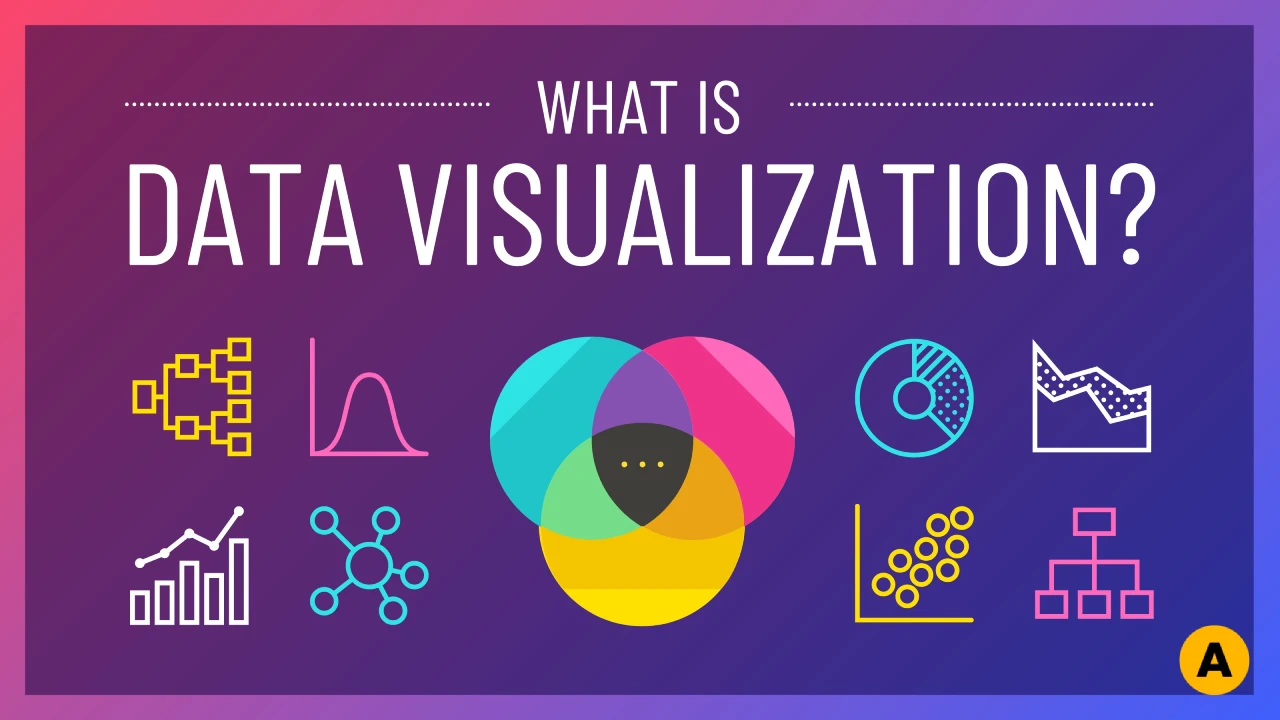In today’s world, where information is everywhere, making sense of it can be tricky. That’s where data visualization comes in. It turns complicated data into visual stories that are easy to understand. Imagine turning numbers into colorful charts or detailed maps that make sense at a glance. I know you might feel that a laborious task! But it’s not, at least with the absographics.com blog, it’s not that difficult!
As businesses and people deal with lots of data every day, knowing how to visualize it is more important than ever. Join us as we dive into the world of data visualization—understanding its role today and picking up tips to create visuals that really connect with your audience. Let’s discover the potential hidden in all that data!
What is Data Visualization?
Data visualization is the practice of showing data through visual tools like charts, graphs, and maps. It helps us spot patterns and trends that might be missed if we just look at raw numbers.
By turning complex data into visuals, as the absographics.com Blog suggests, we can understand it quickly. This method relies on design principles to effectively convey information. Good visualizations not only inform but also engage viewers.
From tracking sales to analyzing social media, data visualization helps bridge the gap between complex data and clear insights. It’s a key tool for anyone needing to use data wisely.
The Importance of Data Visualization Today
In today’s data-rich world, data visualization is crucial. With so much information available, being able to interpret and share it clearly is essential.
Visuals make complex data simpler and easier to understand. They help people see trends and unusual points quickly. When data is visualized well, making decisions becomes faster and more informed.
In business, presentations with clear visuals are more effective than those with just text. Engaging graphics draws attention and leads to better discussions about strategy or performance.
Effective visualizations also promote teamwork. They provide a common understanding that helps different viewpoints come together to solve problems.
As technology advances, the need for intuitive and engaging data visuals will grow. Organizations that use this effectively will stay ahead of the competition and drive innovation.
Also Read | Unblocked Games 66 EZ: A Fun Place to Play Online Games!
Data Visualization Techniques by Absographics.com Blog

The Absographics.com Blog suggests many ways to visualize data, each suited for different types of information. Bar charts are great for comparing quantities across categories—they’re clear and simple.
Line graphs are perfect for showing trends over time. Their continuous lines help viewers understand changes easily, making them ideal for financial data or performance metrics.
Scatter plots are useful for revealing relationships between variables and spotting clusters or outliers.
Heat maps use colors to show values across two dimensions, which is great for geographical data.
Infographics combine visuals and text to make complex information engaging and easy to understand. Each technique has its own strengths, so pick the one that best fits your message and audience.
Tools and Software for Creating Visualizations
Choosing the right tools can turn raw data into engaging visuals. Many software options fit different needs and skill levels.
Tableau is known for its user-friendly interface, making it easy to create interactive dashboards. Whether you’re new to visualization or experienced, Tableau has features for everyone.
For those who like coding, D3.js is a flexible JavaScript library that lets you build custom visualizations from scratch.
Power BI is popular in business for its strong analytics and seamless integration with Microsoft products.
Google Data Studio is free and great for teamwork. Its drag-and-drop features make sharing insights simple while keeping everyone on the same page.
You can explore these tools to find the one that best meets your visualization needs!
Tips by Absographics.com Blog for Designing Effective and Engaging Visualizations
Creating effective visuals is both an art and a science. Start by clearly defining your message. What do you want to communicate? Keep this focus throughout your design.
Choose colors carefully. A limited color palette can create a balanced look while contrasting colors highlight key points. Ensure text is readable against backgrounds.
Keep it simple. Avoid cluttering your visuals with too many details that might distract from the main message. Use whitespace to guide viewers’ attention.
Interactive elements can enhance engagement. They encourage users to explore the data more deeply.
Think about your audience. Adjust complexity and style based on who will be viewing the visualization.
Always test your designs and gather feedback to ensure they are clear and impactful.
Also Read | 6000+ Best Instagram Bio (2024): Attitude, Stylish, Unique Bio for Instagram
Real-Life Examples of Successful Data Visualizations
One example is The New York Times’ COVID-19 dashboard, which made complex pandemic data easy to understand.
Gapminder’s animated charts show global development trends over time, making it easy to see changes in health and wealth.
Spotify’s Wrapped campaign uses personal data visuals to connect with users by showcasing their listening habits.
NASA’s Mars Rover mission used striking infographics to make space exploration results accessible to everyone.
These examples show how effective data visualizations can tell compelling stories and improve understanding.
Conclusion
Data visualization is more than a trend; it’s a vital tool in today’s data-driven world. With so much information available, turning complex data into clear visuals helps decision-makers across various fields. Whether in marketing, healthcare, finance, or education, good visualizations can tell powerful stories and drive action.
Understanding different visualization techniques allows for tailored approaches that resonate with specific audiences. The right tools and software make creating these visuals accessible to everyone, from beginners to experts.
Designing engaging visuals requires thoughtful consideration. Clarity should be the main goal while capturing attention. Real-life examples show how powerful good design can be in conveying important insights.
As businesses increasingly rely on data, mastering data visualization will become even more important. Engaging with this field offers opportunities for personal and organizational success.
For those looking to improve their skills or practices, exploring resources like the absographics.com blog can provide valuable insights and guidance in the world of data visualization.

